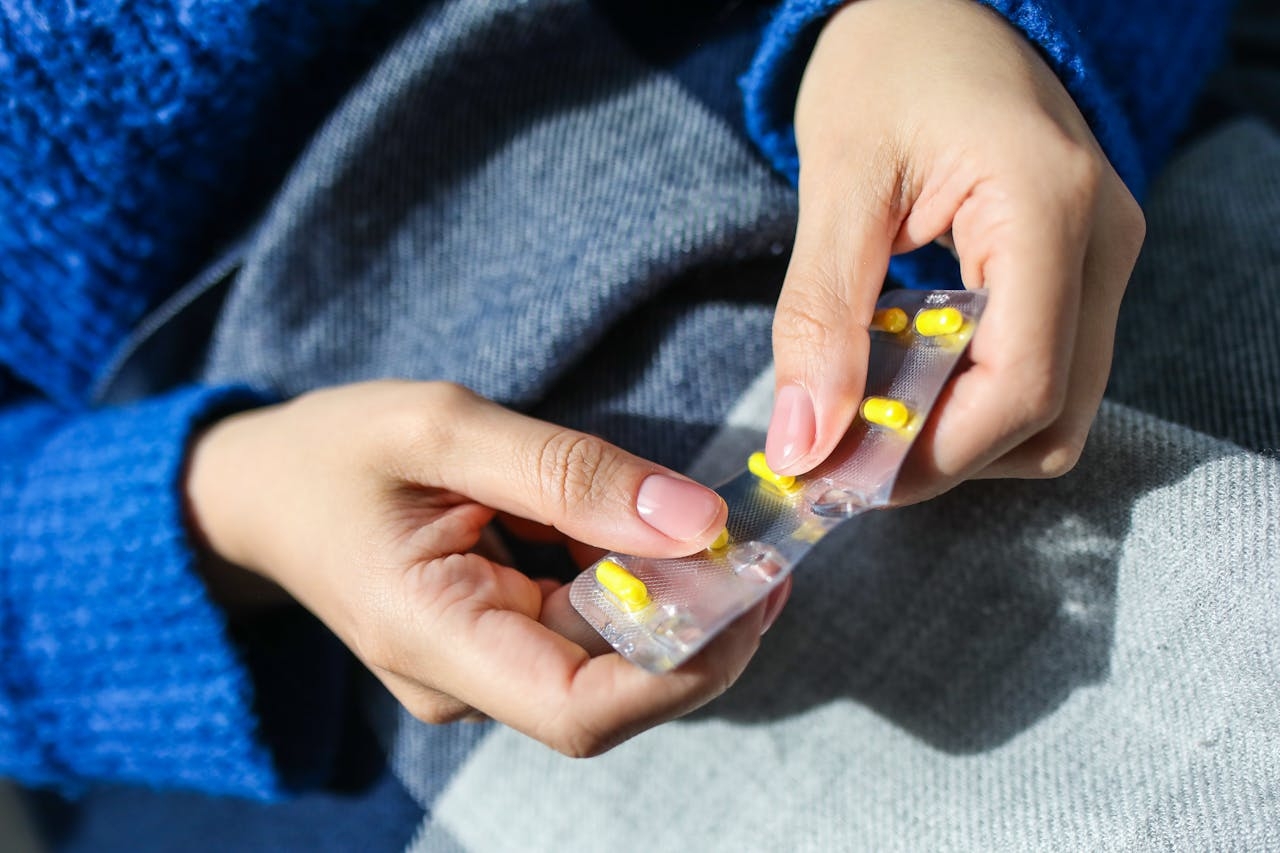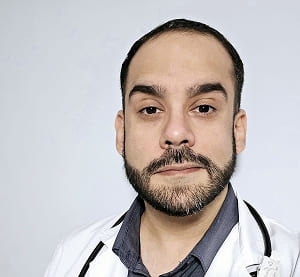
Pregabalina qualigen 300 mg capsulas duras efg

Інструкція із застосування Pregabalina qualigen 300 mg capsulas duras efg
Introduction
Prospect: information for the user
Pregabalina Qualigen 300 mg hard capsules EFG
Read this prospect carefully before starting to take this medicine, because it contains important information for you.
-Keep this prospect, as you may need to read it again.
- If you have any doubts, consult your doctor or pharmacist.
- This medicine has been prescribed only to you, and you must not give it to other people even if they have the same symptoms as you, as it may harm them.
- If you experience any adverse effects, consult your doctor or pharmacist, even if they are not listed in this prospect. See section 4.
1. What is Pregabalina Qualigen and what is it used for
Pregabalina belongs to a group of medications used for the treatment of epilepsy, peripheral and central neuropathic pain, and generalized anxiety disorder (GAD) in adults.
Peripheral and central neuropathic pain:Pregabalina is used for the treatment of chronic pain caused by nerve damage. Various diseases can cause peripheral neuropathic pain, such as diabetes or herpes. The pain sensation could be described as heat, burning, pulsating pain, stabbing pain, acute pain, spasms, continuous pain, tingling, numbness, and pins and needles sensation. Peripheral and central neuropathic pain could also be associated with mood changes, sleep disturbances, fatigue (tiredness), and may affect physical and social activity and overall quality of life.
Epilepsy:Pregabalina is used in the treatment of certain types of epilepsy (partial seizures with or without secondary generalization) in adults. Your doctor will prescribe pregabalina to treat epilepsy when your current treatment does not control the disease. You must take pregabalina in addition to your current treatment. Pregabalina should not be administered alone, but always used in combination with other antiepileptic treatments.
Generalized anxiety disorder:Pregabalina is used in the treatment of generalized anxiety disorder (GAD). Symptoms of GAD include excessive and prolonged anxiety and worry that are difficult to control. GAD can also produce restlessness or feeling of excitement or nervousness, feeling easily fatigued (tired), difficulty concentrating or feeling mentally blank, irritability, muscle tension, or sleep disturbances. This is different from everyday life stress and tensions.
2. What you need to know before starting Pregabalina Qualigen
Do not take Pregabalina Qualigen
If you are allergic to pregabalin or any of the other ingredients of this medication (listed in section 6).
Warnings and precautions
Consult your doctor or pharmacist before starting to take pregabalin.
·Some patients treated with pregabalin have reported symptoms that suggest an allergic reaction. These symptoms include swelling of the face, lips, tongue, and throat, as well as widespread skin rash. If you experience any of these symptoms, you should seek medical attention immediately.
·Severe skin reactions, such as Stevens-Johnson syndrome and toxic epidermal necrolysis, have been associated with pregabalin treatment. Stop taking pregabalin and seek medical attention immediately if you observe any symptoms related to these severe skin reactions described in section 4.
·Pregabalin has been associated with dizziness and somnolence, which may increase the risk of accidental injuries (falls) in elderly patients. Therefore, you should exercise caution until you become familiar with the effects of the medication.
·Pregabalin may cause blurred vision, loss of vision, or other changes in vision, many of which are transient. If you experience any alteration in your vision, you should inform your doctor immediately.
·Patients with diabetes who gain weight while taking pregabalin may need to change their diabetes medications.
·Certain adverse effects, such as somnolence, may be more frequent since patients with spinal cord injury may be taking other medications for treatment, such as pain or spasticity (tense or rigid muscles), with similar adverse effects to pregabalin, so the intensity of these effects may increase when taken together.
·Severe skin reactions, such as Stevens-Johnson syndrome and toxic epidermal necrolysis, have been associated with pregabalin treatment. Stop taking pregabalin and seek medical attention immediately if you observe any symptoms related to these severe skin reactions described in section 4.
·Severe skin reactions, such as Stevens-Johnson syndrome and toxic epidermal necrolysis, have been associated with pregabalin treatment. Stop taking pregabalin and seek medical attention immediately if you observe any symptoms related to these severe skin reactions described in section 4.
·Severe skin reactions, such as Stevens-Johnson syndrome and toxic epidermal necrolysis, have been associated with pregabalin treatment. Stop taking pregabalin and seek medical attention immediately if you observe any symptoms related to these severe skin reactions described in section 4.
·Severe skin reactions, such as Stevens-Johnson syndrome and toxic epidermal necrolysis, have been associated with pregabalin treatment. Stop taking pregabalin and seek medical attention immediately if you observe any symptoms related to these severe skin reactions described in section 4.
·Severe skin reactions, such as Stevens-Johnson syndrome and toxic epidermal necrolysis, have been associated with pregabalin treatment. Stop taking pregabalin and seek medical attention immediately if you observe any symptoms related to these severe skin reactions described in section 4.
·Severe skin reactions, such as Stevens-Johnson syndrome and toxic epidermal necrolysis, have been associated with pregabalin treatment. Stop taking pregabalin and seek medical attention immediately if you observe any symptoms related to these severe skin reactions described in section 4.
·Severe skin reactions, such as Stevens-Johnson syndrome and toxic epidermal necrolysis, have been associated with pregabalin treatment. Stop taking pregabalin and seek medical attention immediately if you observe any symptoms related to these severe skin reactions described in section 4.
·Severe skin reactions, such as Stevens-Johnson syndrome and toxic epidermal necrolysis, have been associated with pregabalin treatment. Stop taking pregabalin and seek medical attention immediately if you observe any symptoms related to these severe skin reactions described in section 4.
·Severe skin reactions, such as Stevens-Johnson syndrome and toxic epidermal necrolysis, have been associated with pregabalin treatment. Stop taking pregabalin and seek medical attention immediately if you observe any symptoms related to these severe skin reactions described in section 4.
·Severe skin reactions, such as Stevens-Johnson syndrome and toxic epidermal necrolysis, have been associated with pregabalin treatment. Stop taking pregabalin and seek medical attention immediately if you observe any symptoms related to these severe skin reactions described in section 4.
·Severe skin reactions, such as Stevens-Johnson syndrome and toxic epidermal necrolysis, have been associated with pregabalin treatment. Stop taking pregabalin and seek medical attention immediately if you observe any symptoms related to these severe skin reactions described in section 4.
·Severe skin reactions, such as Stevens-Johnson syndrome and toxic epidermal necrolysis, have been associated with pregabalin treatment. Stop taking pregabalin and seek medical attention immediately if you observe any symptoms related to these severe skin reactions described in section 4.
·Severe skin reactions, such as Stevens-Johnson syndrome and toxic epidermal necrolysis, have been associated with pregabalin treatment. Stop taking pregabalin and seek medical attention immediately if you observe any symptoms related to these severe skin reactions described in section 4.
·Severe skin reactions, such as Stevens-Johnson syndrome and toxic epidermal necrolysis, have been associated with pregabalin treatment. Stop taking pregabalin and seek medical attention immediately if you observe any symptoms related to these severe skin reactions described in section 4.
·Severe skin reactions, such as Stevens-Johnson syndrome and toxic epidermal necrolysis, have been associated with pregabalin treatment. Stop taking pregabalin and seek medical attention immediately if you observe any symptoms related to these severe skin reactions described in section 4.
·Severe skin reactions, such as Stevens-Johnson syndrome and toxic epidermal necrolysis, have been associated with pregabalin treatment. Stop taking pregabalin and seek medical attention immediately if you observe any symptoms related to these severe skin reactions described in section 4.
·Severe skin reactions, such as Stevens-Johnson syndrome and toxic epidermal necrolysis, have been associated with pregabalin treatment. Stop taking pregabalin and seek medical attention immediately if you observe any symptoms related to these severe skin reactions described in section 4.
·Severe skin reactions, such as Stevens-Johnson syndrome and toxic epidermal necrolysis, have been associated with pregabalin treatment. Stop taking pregabalin and seek medical attention immediately if you observe any symptoms related to these severe skin reactions described in section 4.
·Severe skin reactions, such as Stevens-Johnson syndrome and toxic epidermal necrolysis, have been associated with pregabalin treatment. Stop taking pregabalin and seek medical attention immediately if you observe any symptoms related to these severe skin reactions described in section 4.
·Severe skin reactions, such as Stevens-Johnson syndrome and toxic epidermal necrolysis, have been associated with pregabalin treatment. Stop taking pregabalin and seek medical attention immediately if you observe any symptoms related to these severe skin reactions described in section 4.
·Severe skin reactions, such as Stevens-Johnson syndrome and toxic epidermal necrolysis, have been associated with pregabalin treatment. Stop taking pregabalin and seek medical attention immediately if you observe any symptoms related to these severe skin reactions described in section 4.
·Severe skin reactions, such as Stevens-Johnson syndrome and toxic epidermal necrolysis, have been associated with pregabalin treatment. Stop taking pregabalin and seek medical attention immediately if you observe any symptoms related to these severe skin reactions described in section 4.
·Severe skin reactions, such as Stevens-Johnson syndrome and toxic epidermal necrolysis, have been associated with pregabalin treatment. Stop taking pregabalin and seek medical attention immediately if you observe any symptoms related to these severe skin reactions described in section 4.
·Severe skin reactions, such as Stevens-Johnson syndrome and toxic epidermal necrolysis, have been associated with pregabalin treatment. Stop taking pregabalin and seek medical attention immediately if you observe any symptoms related to these severe skin reactions described in section 4.
·Severe skin reactions, such as Stevens-Johnson syndrome and toxic epidermal necrolysis, have been associated with pregabalin treatment. Stop taking pregabalin and seek medical attention immediately if you observe any symptoms related to these severe skin reactions described in section 4.
·Severe skin reactions, such as Stevens-Johnson syndrome and toxic epidermal necrolysis, have been associated with pregabalin treatment. Stop taking pregabalin and seek medical attention immediately if you observe any symptoms related to these severe skin reactions described in section 4.
·Severe skin reactions, such as Stevens-Johnson syndrome and toxic epidermal necrolysis, have been associated with pregabalin treatment. Stop taking pregabalin and seek medical attention immediately if you observe any symptoms related to these severe skin reactions described in section 4.
·Severe skin reactions, such as Stevens-Johnson syndrome and toxic epidermal necrolysis, have been associated with pregabalin treatment. Stop taking pregabalin and seek medical attention immediately if you observe any symptoms related to these severe skin reactions described in section 4.
·Severe skin reactions, such as Stevens-Johnson syndrome and toxic epidermal necrolysis, have been associated with pregabalin treatment. Stop taking pregabalin and seek medical attention immediately if you observe any symptoms related to these severe skin reactions described in section 4.
·Severe skin reactions, such as Stevens-Johnson syndrome and toxic epidermal necrolysis, have been associated with pregabalin treatment. Stop taking pregabalin and seek medical attention immediately if you observe any symptoms related to these severe skin reactions described in section 4.
·Severe skin reactions, such as Stevens-Johnson syndrome and toxic epidermal necrolysis, have been associated with pregabalin treatment. Stop taking pregabalin and seek medical attention immediately if you observe any symptoms related to these severe skin reactions described in section 4.
·Severe skin reactions, such as Stevens-Johnson syndrome and toxic epidermal necrolysis, have been associated with pregabalin treatment. Stop taking pregabalin and seek medical attention immediately if you observe any symptoms related to these severe skin reactions described in section 4.
·Severe skin reactions, such as Stevens-Johnson syndrome and toxic epidermal necrolysis, have been associated with pregabalin treatment. Stop taking pregabalin and seek medical attention immediately if you observe any symptoms related to these severe skin reactions described in section 4.
·Severe skin reactions, such as Stevens-Johnson syndrome and toxic epidermal necrolysis, have been associated with pregabalin treatment. Stop taking pregabalin and seek medical attention immediately if you observe any symptoms related to these severe skin reactions described in section 4.
·Severe skin reactions, such as Stevens-Johnson syndrome and toxic epidermal necrolysis, have been associated with pregabalin treatment. Stop taking pregabalin and seek medical attention immediately if you observe any symptoms related to these severe skin reactions described in section 4.
·Severe skin reactions, such as Stevens-Johnson syndrome and toxic epidermal necrolysis, have been associated with pregabalin treatment. Stop taking pregabalin and seek medical attention immediately if you observe any symptoms related to these severe skin reactions described in section 4.
·Severe skin reactions, such as Stevens-Johnson syndrome and toxic epidermal necrolysis, have been associated with pregabalin treatment. Stop taking pregabalin and seek medical attention immediately if you observe any symptoms related to these severe skin reactions described in section 4.
·Severe skin reactions, such as Stevens-Johnson syndrome and toxic epidermal necrolysis, have been associated with pregabalin treatment. Stop taking pregabalin and seek medical attention immediately if you observe any symptoms related to these severe skin reactions described in section 4.
·Severe skin reactions, such as Stevens-Johnson syndrome and toxic epidermal necrolysis, have been associated with pregabalin treatment. Stop taking pregabalin and seek medical attention immediately if you observe any symptoms related to these severe skin reactions described in section 4.
·Severe skin reactions, such as Stevens-Johnson syndrome and toxic epidermal necrolysis, have been associated with pregabalin treatment. Stop taking pregabalin and seek medical attention immediately if you observe any symptoms related to these severe skin reactions described in section 4.
·Severe skin reactions, such as Stevens-Johnson syndrome and toxic epidermal necrolysis, have been associated with pregabalin treatment. Stop taking pregabalin and seek medical attention immediately if you observe any symptoms related to these severe skin reactions described in section 4.
·Severe skin reactions, such as Stevens-Johnson syndrome and toxic epidermal necrolysis, have been associated with pregabalin treatment. Stop taking pregabalin and seek medical attention immediately if you observe any symptoms related to these severe skin reactions described in section 4.
·Severe skin reactions, such as Stevens-Johnson syndrome and toxic epidermal necrolysis, have been associated with pregabalin treatment. Stop taking pregabalin and seek medical attention immediately if you observe any symptoms related to these severe skin reactions described in section 4.
·Severe skin reactions, such as Stevens-Johnson syndrome and toxic epidermal necrolysis, have been associated with pregabalin treatment. Stop taking pregabalin and seek medical attention immediately if you observe any symptoms related to these severe skin reactions described in section 4.
·Severe skin reactions, such as Stevens-Johnson syndrome and toxic epidermal necrolysis, have been associated with pregabalin treatment. Stop taking pregabalin and seek medical attention immediately if you observe any symptoms related to these severe skin reactions described in section 4.
·Severe skin reactions, such as Stevens-Johnson syndrome and toxic epidermal necrolysis, have been associated with pregabalin treatment. Stop taking pregabalin and seek medical attention immediately if you observe any symptoms related to these severe skin reactions described in section 4.
·Severe skin reactions, such as Stevens-Johnson syndrome and toxic epidermal necrolysis, have been associated with pregabalin treatment. Stop taking pregabalin and seek medical attention immediately if you observe any symptoms related to these severe skin reactions described in section 4.
·Severe skin reactions, such as Stevens-Johnson syndrome and toxic epidermal necrolysis, have been associated with pregabalin treatment. Stop taking pregabalin and seek medical attention immediately if you observe any symptoms related to these severe skin reactions described in section 4.
·Severe skin reactions, such as Stevens-Johnson syndrome and toxic epidermal necrolysis, have been associated with pregabalin treatment. Stop taking pregabalin and seek medical attention immediately if you observe any symptoms related to these severe skin reactions described in section 4.
·Severe skin reactions, such as Stevens-Johnson syndrome and toxic epidermal necrolysis, have been associated with pregabalin treatment. Stop taking pregabalin and seek medical attention immediately if you observe any symptoms related to these severe skin reactions described in section 4.
·Severe skin reactions, such as Stevens-Johnson syndrome and toxic epidermal necrolysis, have been associated with pregabalin treatment. Stop taking pregabalin and seek medical attention immediately if you observe any symptoms related to these severe skin reactions described in section 4.
·Severe skin reactions, such as Stevens-Johnson syndrome and toxic epidermal necrolysis, have been associated with pregabalin treatment. Stop taking pregabalin and seek medical attention immediately if you observe any symptoms related to these severe skin reactions described in section 4.
·Severe skin reactions, such as Stevens-Johnson syndrome and toxic epidermal necrolysis, have been associated with pregabalin treatment. Stop taking pregabalin and seek medical attention immediately if you observe any symptoms related to these severe skin reactions described in section 4.
·Severe skin reactions, such as Stevens-Johnson syndrome and toxic epidermal necrolysis, have been associated with pregabalin treatment. Stop taking pregabalin and seek medical attention immediately if you observe any symptoms related to these severe skin reactions described in section 4.
·Severe skin reactions, such as Stevens-Johnson syndrome and toxic epidermal necrolysis, have been associated with pregabalin treatment. Stop taking pregabalin and seek medical attention immediately if you observe any symptoms related to these severe skin reactions described in section 4.
·Severe skin reactions, such as Stevens-Johnson syndrome and toxic epidermal necrolysis, have been associated with pregabalin treatment. Stop taking pregabalin and seek medical attention immediately if you observe any symptoms related to these severe skin reactions described in section 4.
·Severe skin reactions, such as Stevens-Johnson syndrome and toxic epidermal necrolysis, have been associated with pregabalin treatment. Stop taking pregabalin and seek medical attention immediately if you observe any symptoms related to these severe skin reactions described in section 4.
·Severe skin reactions, such as Stevens-Johnson syndrome and toxic epidermal necrolysis, have been associated with pregabalin treatment. Stop taking pregabalin and seek medical attention immediately if you observe any symptoms related to these severe skin reactions described in section 4.
·Severe skin reactions, such as Stevens-Johnson syndrome and toxic epidermal necrolysis, have been associated with pregabalin treatment. Stop taking pregabalin and seek medical attention immediately if you observe any symptoms related to these severe skin reactions described in section 4.
·Severe skin reactions, such as Stevens-Johnson syndrome and toxic epidermal necrolysis, have been associated with pregabalin treatment. Stop taking pregabalin and seek medical attention immediately if you observe any symptoms related to these severe skin reactions described in section 4.
·Severe skin reactions, such as Stevens-Johnson syndrome and toxic epidermal necrolysis, have been associated with pregabalin treatment. Stop taking pregabalin and seek medical attention immediately if you observe any symptoms related to these severe skin reactions described in section 4.
·Severe skin reactions, such as Stevens-Johnson syndrome and toxic epidermal necrolysis, have been associated with pregabalin treatment. Stop taking pregabalin and seek medical attention immediately if you observe any symptoms related to these severe skin reactions described in section 4.
·Severe skin reactions, such as Stevens-Johnson syndrome and toxic epidermal necrolysis, have been associated with pregabalin treatment. Stop taking pregabalin and seek medical attention immediately if you observe any symptoms related to these severe skin reactions described in section 4.
·Severe skin reactions, such as Stevens-Johnson syndrome and toxic epidermal necrolysis, have been associated with pregabalin treatment. Stop taking pregabalin and seek medical attention immediately if you observe any symptoms related to these severe skin reactions described in section 4.
·Severe skin reactions, such as Stevens-Johnson syndrome and toxic epidermal necrolysis, have been associated with pregabalin treatment. Stop taking pregabalin and seek medical attention immediately if you observe any symptoms related to these severe skin reactions described in section 4.
·Severe skin reactions, such as Stevens-Johnson syndrome and toxic epidermal necrolysis, have been associated with pregabalin treatment. Stop taking pregabalin and seek medical attention immediately if you observe any symptoms related to these severe skin reactions described in section 4.
·Severe skin reactions, such as Stevens-Johnson syndrome and toxic epidermal necrolysis, have been associated with pregabalin treatment. Stop taking pregabalin and seek medical attention immediately if you observe any symptoms related to these severe skin reactions described in section 4.
·Severe skin reactions, such as Stevens-Johnson syndrome and toxic epidermal necrolysis, have been associated with pregabalin treatment. Stop taking pregabalin and seek medical attention immediately if you observe any symptoms related to these severe skin reactions described in section 4.
·Severe skin reactions, such as Stevens-Johnson syndrome and toxic epidermal necrolysis, have been associated with pregabalin treatment. Stop taking pregabalin and seek medical attention immediately if you observe any symptoms related to these severe skin reactions described in section 4.
·Severe skin reactions, such as Stevens-Johnson syndrome and toxic epidermal necrolysis, have been associated with pregabalin treatment. Stop taking pregabalin and seek medical attention immediately if you observe any symptoms related to these severe skin reactions described in section 4.
·Severe skin reactions, such as Stevens-Johnson syndrome and toxic epidermal necrolysis, have been associated with pregabalin treatment. Stop taking pregabalin and seek medical attention immediately if you observe any symptoms related to these severe skin reactions described in section 4.
·Severe skin reactions, such as Stevens-Johnson syndrome and toxic epidermal necrolysis, have been associated with pregabalin treatment. Stop taking pregabalin and seek medical attention immediately if you observe any symptoms related to these severe skin reactions described in section 4.
·Severe skin reactions, such as Stevens-Johnson syndrome and toxic epidermal necrolysis, have been associated with pregabalin treatment. Stop taking pregabalin and seek medical attention immediately if you observe any symptoms related to these severe skin reactions described in section 4.
·Severe skin reactions, such as Stevens-Johnson syndrome and toxic epidermal necrolysis, have been associated with pregabalin treatment. Stop taking pregabalin and seek medical attention immediately if you observe any symptoms related to these severe skin reactions described in section 4.
·Severe skin reactions, such as Stevens-Johnson syndrome and toxic epidermal necrolysis, have been associated with pregabalin treatment. Stop taking pregabalin and seek medical attention immediately if you observe any symptoms related to these severe skin reactions described in section 4.
·Severe skin reactions, such as Stevens-Johnson syndrome and toxic epidermal necrolysis, have been associated with pregabalin treatment. Stop taking pregabalin and seek medical attention immediately if you observe any symptoms related to these severe skin reactions described in section 4.
·Severe skin reactions, such as Stevens-Johnson syndrome and toxic epidermal necrolysis, have been associated with pregabalin treatment. Stop taking pregabalin and seek medical attention immediately if you observe any symptoms related to these severe skin reactions described in section 4.
·Severe skin reactions, such as Stevens-Johnson syndrome and toxic epidermal necrolysis, have been associated with pregabalin treatment. Stop taking pregabalin and seek medical attention immediately if you observe any symptoms related to these severe skin reactions described in section 4.
·Severe skin reactions, such as Stevens-Johnson syndrome and toxic epidermal necrolysis, have been associated with pregabalin treatment. Stop taking pregabalin and seek medical attention immediately if you observe any symptoms related to these severe skin reactions described in section 4.
·Severe skin reactions, such as Stevens-Johnson syndrome and toxic epidermal necrolysis, have been associated with pregabalin treatment. Stop taking pregabalin and seek medical attention immediately if you observe any symptoms related to these severe skin reactions described in section 4.
·Severe skin reactions, such as Stevens-Johnson syndrome and toxic epidermal necrolysis, have been associated with pregabalin treatment. Stop taking pregabalin and seek medical attention immediately if you observe any symptoms related to these severe skin reactions described in section 4.
·Severe skin reactions, such as Stevens-Johnson syndrome and toxic epidermal necrolysis, have been associated with pregabalin treatment. Stop taking pregabalin and seek medical attention immediately if you observe any symptoms related to these severe skin reactions described in section 4.
·Severe skin reactions, such as Stevens-Johnson syndrome and toxic epidermal necrolysis, have been associated with pregabalin treatment. Stop taking pregabalin and seek medical attention immediately if you observe any symptoms related to these severe skin reactions described in section 4.
·Severe skin reactions, such as Stevens-Johnson syndrome and toxic epidermal necrolysis, have been associated with pregabalin treatment. Stop taking pregabalin and seek medical attention immediately if you observe any symptoms related to these severe skin reactions described in section 4.
·Severe skin reactions, such as Stevens-Johnson syndrome and toxic epidermal necrolysis, have been associated with pregabalin treatment. Stop taking pregabalin and seek medical attention immediately if you observe any symptoms related to these severe skin reactions described in section 4.
·Severe skin reactions, such as Stevens-Johnson syndrome and toxic epidermal necrolysis, have been associated with pregabalin treatment. Stop taking pregabalin and seek medical attention immediately if you observe any symptoms related to these severe skin reactions described in section 4.
·Severe skin reactions, such as Stevens-Johnson syndrome and toxic epidermal necrolysis, have been associated with pregabalin treatment. Stop taking pregabalin and seek medical attention immediately if you observe any symptoms related to these severe skin reactions described in section 4.
·Severe skin reactions, such as Stevens-Johnson syndrome and toxic epidermal necrolysis, have been associated with pregabalin treatment. Stop taking pregabalin and seek medical attention immediately if you observe any symptoms related to these severe skin reactions described in section 4.
·Severe skin reactions, such as Stevens-Johnson syndrome and toxic epidermal necrolysis, have been associated with pregabalin treatment. Stop taking pregabalin and seek medical attention immediately if you observe any symptoms related to these severe skin reactions described in section 4.
·Severe skin reactions, such as Stevens-Johnson syndrome and toxic epidermal necrolysis, have been associated with pregabalin treatment. Stop taking pregabalin and seek medical attention immediately if you observe any symptoms related to these severe skin reactions described in section 4.
·Severe skin reactions, such as Stevens-Johnson syndrome and toxic epidermal necrolysis, have been associated with pregabalin treatment. Stop taking pregabalin and seek medical attention immediately if you observe any symptoms related to these severe skin reactions described in section 4.
·Severe skin reactions, such as Stevens-Johnson syndrome and toxic epidermal necrolysis, have been associated with pregabalin treatment. Stop taking pregabalin and seek medical attention immediately if you observe any symptoms related to these severe skin reactions described in section 4.
·Severe skin reactions, such as Stevens-Johnson syndrome and toxic epidermal necrolysis, have been associated with pregabalin treatment. Stop taking pregabalin and seek medical attention immediately if you observe any symptoms related to these severe skin reactions described in section 4.
·Severe skin reactions, such as Stevens-Johnson syndrome and toxic epidermal necrolysis, have been associated with pregabalin treatment. Stop taking pregabalin and seek medical attention immediately if you observe any symptoms related to these severe skin reactions described in section 4.
·Severe skin reactions, such as Stevens-Johnson syndrome and toxic epidermal necrolysis, have been associated with pregabalin treatment. Stop taking pregabalin and seek medical attention immediately if you observe any symptoms related to these severe skin reactions described in section 4.
·Severe skin reactions, such as Stevens-Johnson syndrome and toxic epidermal necrolysis, have been associated with pregabalin treatment. Stop taking pregabalin and seek medical attention immediately if you observe any symptoms related to these severe skin reactions described in section 4.
·Severe skin reactions, such as Stevens-Johnson syndrome and toxic epidermal necrolysis, have been associated with pregabalin treatment. Stop taking pregabalin and seek medical attention immediately if you observe any symptoms related to these severe skin reactions described in section 4.
·Severe skin reactions, such as Stevens-Johnson syndrome and toxic epidermal necrolysis, have been associated with pregabalin treatment. Stop taking pregabalin and seek medical attention immediately if you observe any symptoms related to these severe skin reactions described in section 4.
·Severe skin reactions, such as Stevens-Johnson syndrome and toxic epidermal necrolysis, have been associated with pregabalin treatment. Stop taking pregabalin and seek medical attention immediately if you observe any symptoms related to these severe skin reactions described in section 4.
·Severe skin reactions, such as Stevens-Johnson syndrome and toxic epidermal necrolysis, have been associated with pregabalin treatment. Stop taking pregabalin and seek medical attention immediately if you observe any symptoms related to these severe skin reactions described in section 4.
·Severe skin reactions, such as Stevens-Johnson syndrome and toxic epidermal necrolysis, have been associated with pregabalin treatment. Stop taking pregabalin and seek medical attention immediately if you observe any symptoms related to these severe skin reactions described in section 4.
·Severe skin reactions, such as Stevens-Johnson syndrome and toxic epidermal necrolysis, have been associated with pregabalin treatment. Stop taking pregabalin and seek medical attention immediately if you observe any symptoms related to these severe skin reactions described in section 4.
·Severe skin reactions, such as Stevens-Johnson syndrome and toxic epidermal necrolysis, have been associated with pregabalin treatment. Stop taking pregabalin and seek medical attention immediately if you observe any symptoms related to these severe skin reactions described in section 4.
·Severe skin reactions, such as Stevens-Johnson syndrome and toxic epidermal necrolysis, have been associated with pregabalin treatment. Stop taking pregabalin and seek medical attention immediately if you observe any symptoms related to these severe skin reactions described in section 4.
·Severe skin reactions, such as Stevens-Johnson syndrome and toxic epidermal necrolysis, have been associated with pregabalin treatment. Stop taking pregabalin and seek medical attention immediately if you observe any symptoms related to these severe skin reactions described in section 4.
·Severe skin reactions, such as Stevens-Johnson syndrome and toxic epidermal necrolysis, have been associated with pregabalin treatment. Stop taking pregabalin and seek medical attention immediately if you observe any symptoms related to these severe skin reactions described in section 4.
·Severe skin reactions, such as Stevens-Johnson syndrome and toxic epidermal necrolysis, have been associated with pregabalin treatment. Stop taking pregabalin and seek medical attention immediately if you observe any symptoms related to these severe skin reactions described in section 4.
·Severe skin reactions, such as Stevens-Johnson syndrome and Follow exactly the administration instructions of this medication as indicated by your doctor. Your doctor will determine the appropriate dose for you. Pregabalina is exclusively for oral use. Peripheral and central neuropathic pain, epilepsy, or generalized anxiety disorder: If you are an elderly patient (over 65 years old), you should take pregabalina normally, except if you have kidney problems. Your doctor may prescribe a different dosing regimen and/or different doses if you have kidney problems. Swallow the capsule whole with water. Continue taking pregabalina until your doctor tells you to stop. If you take more Pregabalina Qualigen than you should In case of overdose or accidental ingestion, consult your doctor or pharmacist immediately or call the Toxicological Information Service, phone: 91 562 04 20, indicating the medication and the amount ingested. It is essential to take the pregabalina capsules regularly at the same time every day. If you forget to take a dose, take it as soon as you remember, unless it is time for the next dose. In that case, continue with the next dose normally. Do not take a double dose to compensate for the missed doses. If you interrupt the treatment with Pregabalina Qualigen Do not stop taking pregabalina suddenly. If you want to stop taking pregabalina, talk to your doctor first. He will tell you how to do it. If you are going to stop treatment, this should be done gradually over a minimum of one week. Once a short- or long-term treatment with pregabalina is completed, you should know that you may experience certain adverse effects, called withdrawal effects. These effects include insomnia, headaches, nausea, anxiety, diarrhea, flu-like symptoms, seizures, nervousness, depression, thoughts of self-harm or suicide, pain, sweating, and dizziness. These effects may appear more frequently or severely if you have been taking pregabalina for a longer period. If you experience withdrawal effects, consult your doctor. If you have any other doubts about the use of this medication, ask your doctor or pharmacist. The very common side effects that may affect more than 1 in 10 people are: · Keep this medication out of the sight and reach of children. Do not use this medication after the expiration date that appears on the packaging after the abbreviation CAD.The expiration date is the last day of the month indicated. This medication does not require special storage conditions. Medications should not be disposed of through drains or in the trash. Dispose of the packaging and medications you no longer need at the SIGRE collection pointat the pharmacy. If in doubt, ask your pharmacist how to dispose of the packaging and medications you no longer need. By doing so, you will help protect the environment. Pregabalina Qualigen Composition The active ingredient is pregabalin. Each hard capsule contains 25 mg of pregabalin. The other components (excipients) are: mannitol (E-421), pregelatinized cornstarch, talc, titanium dioxide (E-171), yellow iron oxide (E-172), and gelatin. Pregabalina Qualigen 25 mg are hard, opaque, ivory-colored gelatin capsules with "25" engraved. Pre-cutsingle-dosePVC/Aluminumblister packsincartonscontaining56hardcapsules. Possibleonlysomepack sizesmaybecommercialized. Neuraxpharm Spain, S.L.U. Avda. Barcelona, 69 08970 Sant Joan Despí Barcelona - Spain Prilaz Baruna Filipovica 25 10000 Zagreb Croatia or Merckle GmbH Ludwig-Merckle Strasse 3 D-89143 Blaubeuren - Weiler Germany The detailed information on this medicine is available on the website of the Spanish Agency for Medicines and Medical Devices (AEMPS)http://www.aemps.gob.es/ Pregabalina qualigen 300 mg capsulas duras efg коштує в середньому 58.82 євро у вересень, 2025 році. Ціна може змінюватися залежно від регіону, аптеки та наявності рецепта. Рекомендуємо перевіряти актуальну вартість у місцевих аптеках або через онлайн-сервіси.3. How to Take Pregabalin Qualigen
In case of doubt, consult your doctor or pharmacist again. Do not take more medication than prescribed.
If you estimate that the action of pregabalina is too strong or too weak, inform your doctor or pharmacist.
As a result of taking more pregabalina than you should, you may feel drowsy, confused, agitated, or restless. Seizures and loss of consciousness (coma) have also been reported.
If you forgot to take Pregabalina Qualigen4. Possible Adverse Effects
5. Pregabalina Qualigen Storage
6. Contents of the packaging and additional information
The components of the printing ink are: shellac lacquer, black iron oxide (E-172), propylene glycol, strong ammonia solution, and potassium hydroxide.
Appearance of the product and contents of the package
Blister packsofPVC/Aluminumincartonscontaining56hardcapsules.
Marketing authorization holder and responsible manufacturer
Marketing authorization holder
Responsible manufacturer
Pliva Croatia, Ltd.
Last review date of this leaflet:December 2023Скільки коштує Pregabalina qualigen 300 mg capsulas duras efg в Іспанії у 2025 році?
- Країна реєстрації
- Середня ціна в аптеках58.82 EUR
- Діючі речовини
- Потрібен рецептТак
- Виробник
- СкладManitol (e-421) (40,0 mg mg)
- Інформація є довідковою і не є медичною порадою. Перед прийомом будь-яких препаратів обов'язково проконсультуйтеся з лікарем. Oladoctor не несе відповідальності за медичні рішення, прийняті на основі цього контенту.
Консультація онлайн щодо Pregabalina qualigen 300 mg capsulas duras efg
Онлайн-консультація з лікарем
Є запитання про цей препарат чи свої симптоми? Запишіться на відеоприйом — лікар пояснить лікування та, за потреби, оформить рецепт.
















